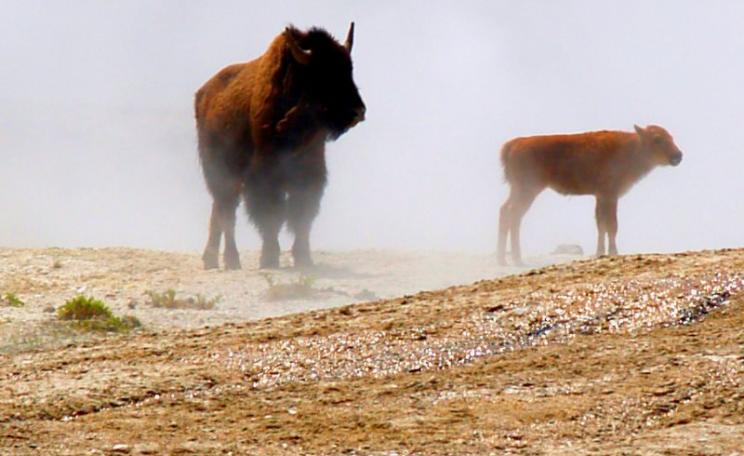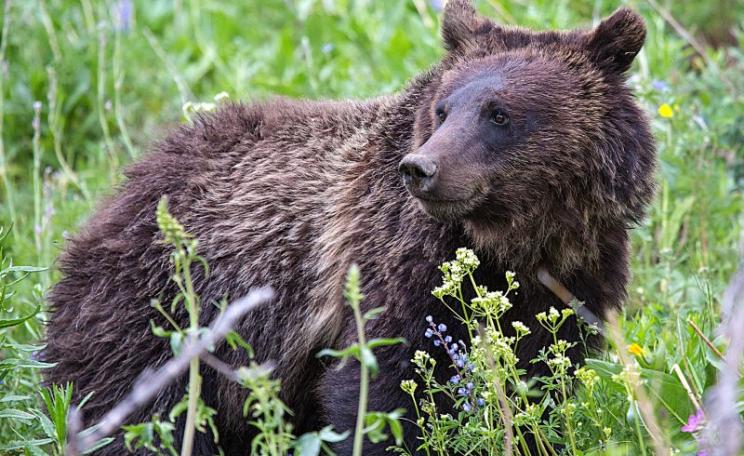If wolves can't live inside one of America's biggest wilderness areas without a government extermination program then where can they live?
A coalition of conservationists have petitioned a federal judge in Idaho to halt a wolf extermination program by the US Forest Service and Idaho Department of Fish and Game (IDFG).
The program aims to eradicate two entire wolf packs deep within central Idaho's 2.4-million-acre Frank Church-River of No Return Wilderness - the largest forested wilderness area in the lower 48 states.
In mid-December 2013, IDFG hired a hunter-trapper to pack into to eradicate two wolf packs, the Golden and Monumental packs, in the interest of inflating elk populations for outfitters and recreational hunters.
Under pressure from hunters
This followed pressure from hunters to cull the wolf population in November at the Idaho Fish and Game Commission's quarterly meeting. Yankee Fork resident Darr Moon was just one of those calling for action.
At least two people he knew had been "harassed" or "chased" to their vehicles by wolves, he said. "We live amongst the wolves now, not amongst the elk ... My boys went to school in Stanley and in the springtime there'd easily be 300 elk in the fields out there and now if you see 20 it's a rarity."
Of the 442 comments received in a public consultation on the Idaho Fish and Game Commission's draft elk management plan, 150 wanted stronger wolf controls and only 19 wanted wolf controls removed.
The US Forest Service, which administers the wilderness, approved the extermination program by authorizing use of a Forest Service cabin and airstrip to support wolf extermination activities.
Wilderness or elk farm?
Attorney Timothy Preso of the non-profit environmental law group Earthjustice said: "A wilderness is supposed to be a wild place governed by natural conditions, not an elk farm. Wolves are a key part of that wild nature and we are asking a judge to protect the wilderness by stopping the extermination of two wolf packs."
Earthjustice is representing long-time Idaho conservationist and wilderness advocate Ralph Maughan along with Defenders of Wildlife, Western Watersheds Project, and Wilderness Watch and the Center for Biological Diversity (CBD).
They argue that the Forest Service's approval and enabling of the program violated the agency's duty to protect the wilderness character of the Frank Church Wilderness.
"The 1964 Wilderness Act requires the Forest Service to protect the wilderness character of the Frank Church Wilderness", said Gary Macfarlane of Wilderness Watch. "By allowing Idaho to exterminate wolves in the Frank Church Wilderness and degrade that wilderness character, the Forest Service is violating the Wilderness Act."
If wolves can't live inside one of America's biggest wilderness areas without a government extermination program then where can they live?
As an interim measure they have requested an injunction to prohibit further implementation of the wolf extermination program until their main case can be resolved.
Program 'hostile and short-sighted'
Jonathan Proctor of Defenders of Wildlife said: "Idaho's program to eliminate two wolf packs from the Frank Church Wilderness Area for perceived benefits to elk hunting is just the most recent example of the state bending over backwards to accommodate the wishes of people who hate wolves."
"Wilderness areas are places for wildlife to remain as wild as is possible in today's modern world. If Idaho's wildlife officials won't let wolves and elk interact naturally in the Frank Church Wilderness, then clearly they will allow it nowhere.
"The US Forest Service must immediately prohibit the use of national forest wilderness areas for this hostile and shortsighted wolf eradication program."
Cruel and reactionary
In fact, elk numbers in Idaho are at an all-time high. They have declined in recent years in the Frank Church, but remain healthy and are expected to increase with recent habitat created by fires.
"Killing these wolf packs has nothing to do with science-based wildlife management and everything to do with the anti-wolf attitudes of some hunters and the Department of Fish and Game", commented Noah Greenwald, the CBD's endangered species director.
"Hiring a bounty hunter to kill wolves in one of America's crown-jewel wilderness areas is one more example of the deeply sad, cruel and reactionary nature of Idaho's ‘management' of wolves. This outrageous slaughter is a clear reminder of why all of our country's wolves need the protection of the Endangered Species Act."
Hunters before ecosystems
The region of the Frank Church Wilderness where IDFG's hired hunter-trapper is killing wolves is a remote area around Big Creek and the Middle Fork of the Salmon River.
The region hosts one of the lightest densities of hunters in the state, however IDFG chose to prioritize elk production over protection of the area's ecosystems and its wilderness character. The Forest Service actively assisted them by providing use of its cabin and airstrip.
"The value of wilderness is not solely to provide outfitters elk to shoot", said Ken Cole of Western Watersheds Project. "As someone who has enjoyed watching members of the Golden Pack and spent time in the area where these wolves live, I am startled that IDFG thinks it is acceptable to kill them off.
"If wolves can't live inside one of America's biggest wilderness areas without a government extermination program then where can they live?"
Also in today's Ecologist: Restore large carnivores to save struggling ecosystems.







